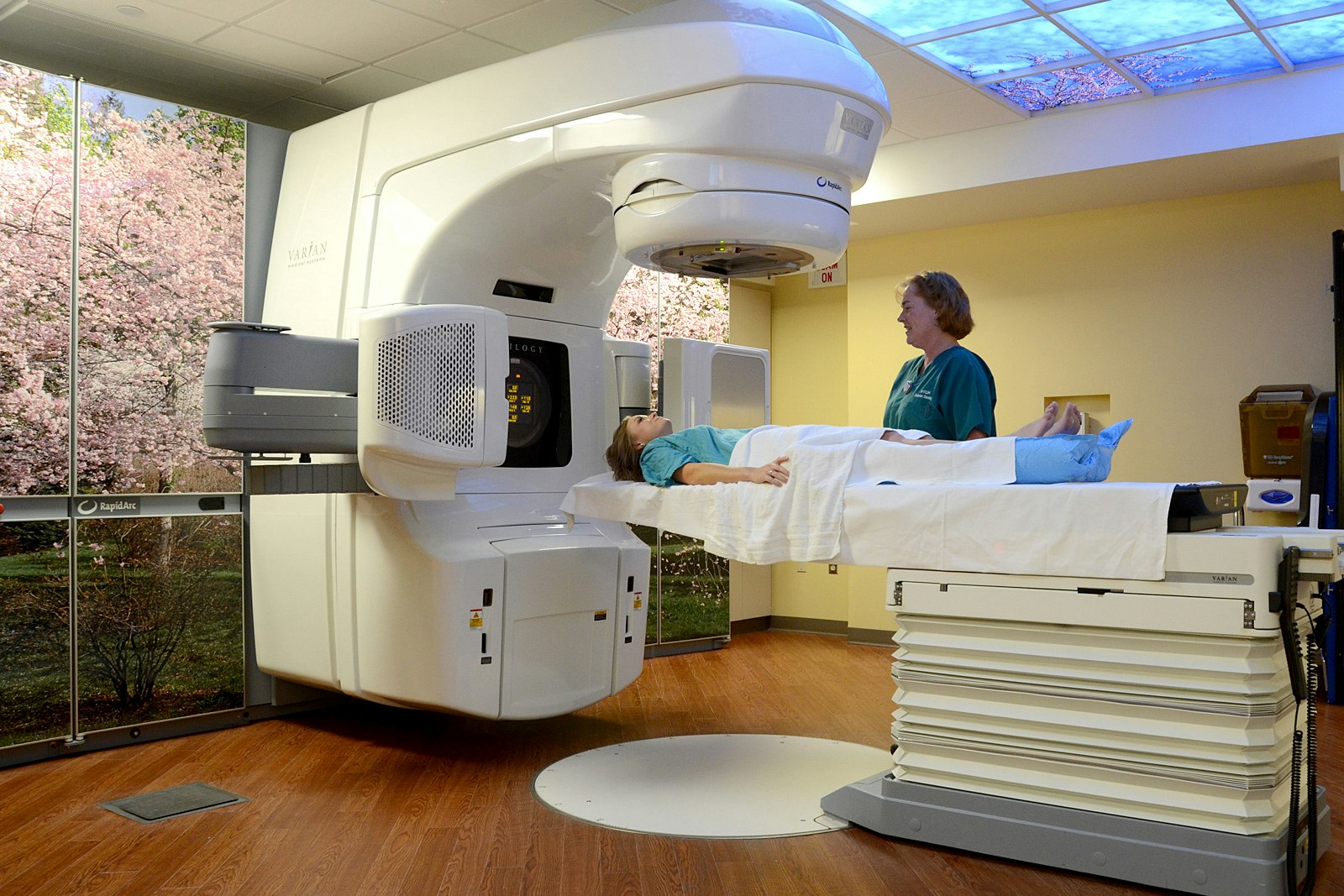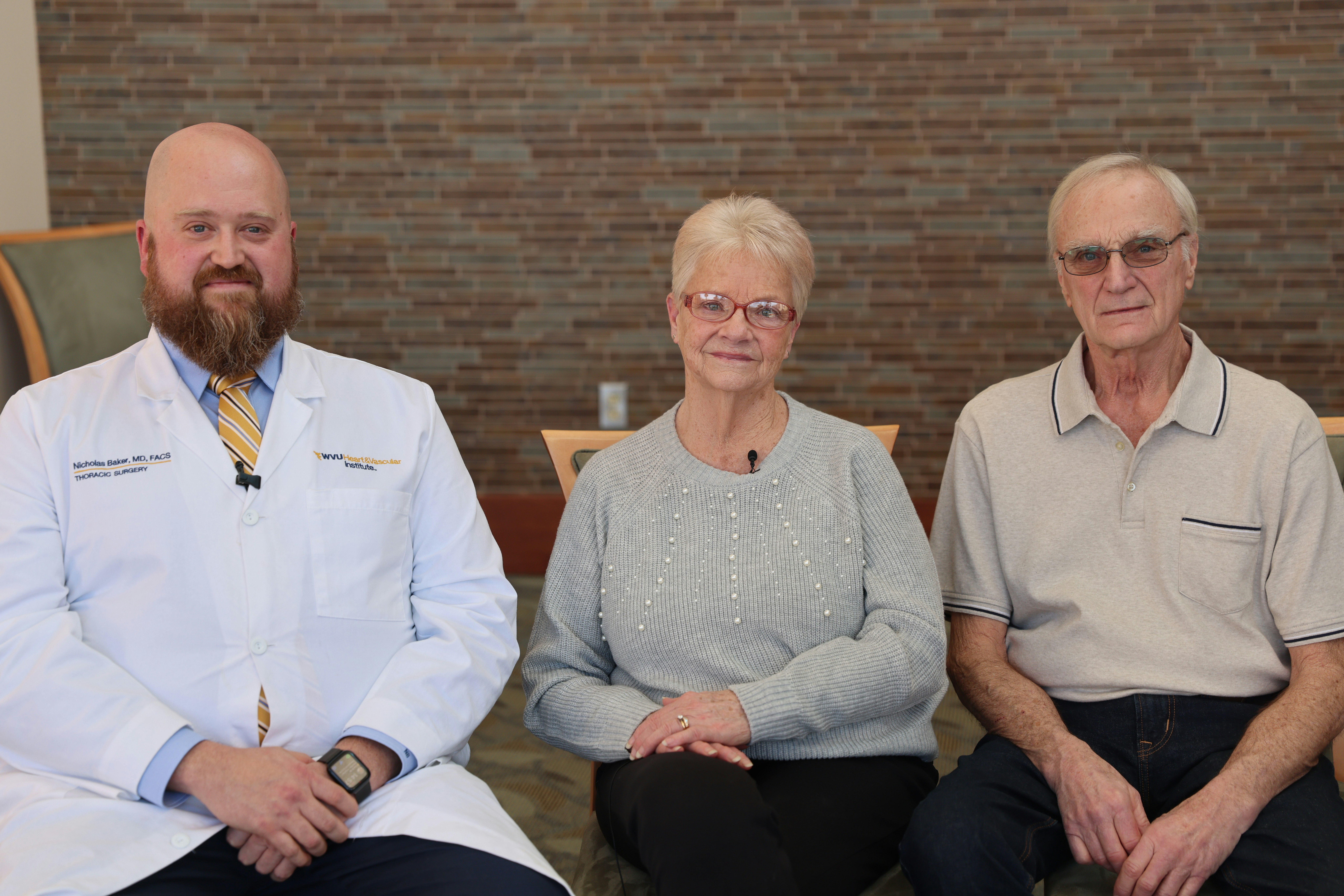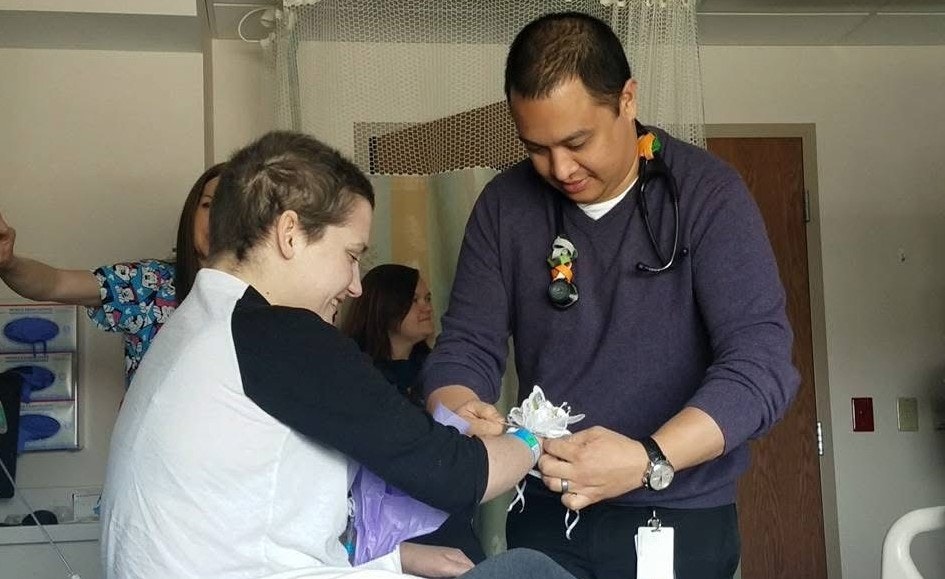Our oncology specialists at the WVU Cancer Institute treat precancerous, cancerous, and benign head and neck conditions. With a higher rate of head and neck cancers than the national average, West Virginians are particularly at risk. Individuals who have a greater risk for head and neck cancer include those who use tobacco products or alcohol, are exposed to wood dust or the Epstein-Barr virus infection, have been diagnosed with cancer-causing types of human papillomavirus (HPV), especially HPV-16, and who have poor oral health.
Head and neck cancers usually begin in the squamous cells that line the mucus membrane surfaces inside the mouth, nose, and throat, but these cancers may also start in the salivary glands.
Types of Head and Neck Cancers We Treat
Our WVU Cancer Institute team specializes in evaluating and treating cancerous and noncancerous tumors that affect the head and neck. Our comprehensive team brings together surgeons, medical oncologists, radiation oncologists, highly trained nurses, pathologists, speech and swallow therapists and endocrinologists — all with expertise in head and neck conditions. We work to make sure your treatment is customized to your specific type of cancer and your needs.
Our team of experts treats all types of head and neck cancers, including cancers of the:
Larynx
This type of cancer is also called cancer of the voice box. It forms in the tissues of the larynx and is most often linked to tobacco and alcohol use.
Pharynx
This type of cancer includes cancer of the pharynx (throat), nasopharynx (the upper part of the throat), the oropharynx (the middle part of the pharynx), and the hypopharynx (the bottom part of the pharynx).
Paranasal sinus and nasal cavity
The paranasal sinuses are the small, hollow spaces in the bones that surround the nose. The paranasal sinuses and nasal cavity are lined with mucus-producing tissue with nerve, squamous, and glandular cells that may become cancerous.
Oral cavity
This type of cancer (also called mouth cancer) includes cancer of the lips, tongue, gums, roof and floor of the mouth, and lining of the inside of the cheeks. Oral cavity cancers are most often squamous cell carcinomas that begin in the cells lining the lips and inside of the mouth.
Salivary gland
This type of cancer starts in the salivary glands that make saliva in the mouth and throat. We treat benign and malignant tumors of the salivary glands.
Thyroid and parathyroid glands
The thyroid is the butterfly-shaped gland at the base of the neck. Thyroid tumors are benign (noncancerous) or malignant (cancerous) tumors that form in the tissue of the thyroid gland.
Skin cancer of the head and neck
The majority of skin cancers of the head and neck are nonmelanoma skin cancers. Cancer of the head and neck includes basal cell carcinoma and squamous cell carcinoma. The least common form of skin cancer is melanoma.
Diagnosing Head and Neck Cancers
There are different ways to diagnose head and neck cancers. It’s important for you to talk to your doctor if you notice any new symptoms or problems with swallowing and speaking. Also, see your doctor if you notice changes such as hoarseness in the voice, a lump in the throat, or a sore throat that doesn’t go away. If your doctor suspects you may have cancer, certain tests will help explain what is going on in your body.
- Advanced imaging — Doctors use ultrasound, computed tomography (CT), magnetic resonance image (MRI), and positron emission tomography (PET) scans to detect signs of disease and see whether cancer has spread to other areas of the body, such as the lymph nodes.
- Biopsy — Doctors remove a small sample of tissue at the tumor site to analyze in a lab. Biopsy results help oncologists plan the best treatment for you. There are different types of biopsies, including image-guided biopsy, sentinel lymph node biopsy, and ultrasound-guided biopsies.
- Endoscopic procedures — Doctors use endoscopic procedures to look for abnormalities inside the nose and throat and down the esophagus. An endoscope is a thin, lighted tube with a video camera on the end. Doctors use it to view the larynx, pharynx, nasopharynx, and nasal passages.
- Modified barium swallow — This test, also called an upper GI series, takes a series of x-rays to evaluate swallowing problems. The patient drinks a liquid containing a silver-white metallic compound (barium) that helps coat the esophagus and allow for clear pictures.
- Panoramic radiograph — Doctors obtain a panoramic dental image of the upper and lower jaw, and the radiograph shows a two-dimensional view of a half-circle from ear to ear.
Treatment for Head and Neck Cancers
From your first visit, our team works with you to address your specific condition and needs. Our goal is to preserve organs and improve functional outcomes. Your care plan may include:
- Endoscopic laser technology — In certain cancers of the head and neck, lasers may be a treatment option. This would depend on the stage and type of cancer.
- Infusion therapy — Our doctors give medicine and fluids through a catheter into your bloodstream. Medicines may include antibiotics, chemotherapy, and fluids to build nutrients.
- Medical oncology — Medical oncology includes chemotherapy, immunotherapy, targeted therapy, and hormone therapy. Our doctors use the latest in anti-cancer medicine to destroy cancer cells, slow cancer growth, and shrink tumors before surgery. Sometimes, we use medication alongside other treatments, such as radiation, or after surgery to destroy any cancer cells that might remain. We conduct multiple clinical trials using investigational agents and combinations of targeted, chemo, and immunotherapy.
- Microvascular reconstructive surgery — This type of surgery uses a piece of tissue from another part of the body that is transferred to the head and neck. This allows reconstructive surgeons to rebuild a jaw, reconstruct the throat, or help the tongue function better after cancer treatment.
- Radiation oncology — We use radiotherapy treatments to target, destroy, and shrink many types of cancers. The treatments use a linear accelerator to produce precise, high-energy rays that target the exact area of cancer and spare healthy cells. Radiation oncology includes 3D conformal radiotherapy, image-guided radiation therapy, stereotactic radiation therapy, intensity-modulated radiation therapy.
- Surgery — Surgery helps us diagnose, stage, and treat many tumors. We also use it to relieve symptoms caused by tumors that press on a nerve or bone. Surgical options for head and neck cancer include advanced robot-assisted surgery, endoscopic surgery, image-guided surgery, reconstructive surgery, and plastic surgery.
- Speech and swallowing rehabilitation — After head and neck cancer treatment, there may be changes in speech and swallowing. We work to preserve these functions as much as possible. Therapy and rehabilitation may help improve the function of both speech and swallowing and improve quality of life.
Resources for Head and Neck Cancers
We believe cancer care goes beyond the medical diagnosis and treatment. That’s why you can access many resources that may help answer questions and connect you to others.





